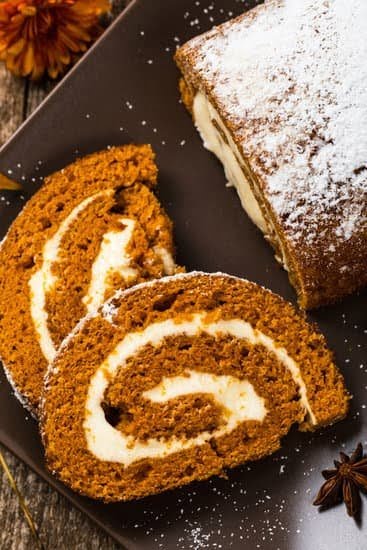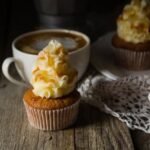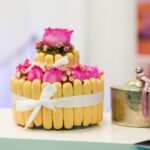Are you looking to elevate your cake decorating skills? One essential component of this art form is mastering the art of butter icing. In this tutorial, we will guide you through the process of creating the perfect butter icing for cake decorating. Whether you’re a beginner or an experienced baker, mastering this technique will take your cakes to the next level.
Butter icing is not just a simple topping for cakes; it is an important element in the overall design and flavor of a decorated cake. It provides a smooth and creamy base for intricate decorations and adds a deliciously sweet flavor that complements the cake underneath. This tutorial will equip you with all the knowledge and techniques needed to create beautiful and delicious butter icing for your cakes.
In the following sections, we will cover everything from the necessary ingredients and tools to step-by-step instructions and expert tips for achieving the perfect consistency and flavor. We will also explore different flavor variations, decorating techniques, and troubleshooting solutions. By the end of this tutorial, you’ll be ready to unleash your creativity and create stunning designs with your homemade butter icing. So let’s get started on this exciting journey into the world of cake decorating.
Ingredients
When it comes to making butter icing for cake decorating, having the right ingredients is essential for achieving the perfect texture and flavor. Here is a list of all the necessary ingredients you will need to make delicious butter icing at home:
- 1 cup (2 sticks) unsalted butter, softened
- 4 cups powdered sugar
- 1 teaspoon vanilla extract
- 2-3 tablespoons milk
It’s important to use unsalted butter as it allows you to control the level of salt in your butter icing. Additionally, using high-quality powdered sugar and pure vanilla extract can greatly enhance the flavor of your icing. The milk is used to adjust the consistency of the butter icing, so it’s best to start with a smaller amount and gradually add more as needed.
As you gather these ingredients, ensure that the butter is at room temperature for easier mixing and smoother consistency in your butter icing. With these simple yet essential ingredients, you’re ready to embark on creating delectable butter icing for your cakes.
Once you have all your ingredients ready, it’s time to move on to the next step: preparing them and making your own batch of delicious butter icing.
Tools and Equipment
When it comes to making butter icing for cake decorating, having the right tools and equipment is crucial to achieving the perfect consistency and achieving beautifully decorated cakes. Here is a breakdown of the essential tools and equipment needed for making butter icing:
Mixer
A stand mixer or hand-held mixer is essential for making butter icing. It helps to cream the butter and sugar together, resulting in a smooth and creamy texture. If you don’t have a mixer, you can also use a wooden spoon or spatula, but it will require more effort and time.
Spatula
A good quality spatula is necessary for scraping down the sides of the mixing bowl and ensuring all ingredients are well combined. It’s also useful for spreading the butter icing onto the cake evenly.
Piping Bags
Piping bags are indispensable for cake decorating with butter icing. They allow for precision when piping borders, flowers, and other decorative elements onto the cake. Make sure to have a variety of piping tips on hand to achieve different designs and textures.
Other Optional Tools
Other optional tools that can be helpful when making butter icing include an offset spatula for smoothing out the icing on cakes, food coloring gels for tinting the icing different colors, and a turntable for easy application of icing on the cake.
Having these tools and equipment at your disposal will make it easier to create beautiful and professional-looking cakes with butter icing. Whether you’re a beginner or experienced baker, having the right tools will certainly elevate your cake decorating skills when using butter icing.
Overall, by having these essential tools on hand along with quality ingredients, anyone can successfully make delicious butter icing at home that is perfect for cake decorating.
Step-by-Step Instructions
- Cream the Butter: In a large mixing bowl, beat the butter using an electric mixer until it is smooth and creamy. This usually takes about 3-5 minutes.
- Gradually Add the Sugar: With the mixer on low speed, gradually add the powdered sugar to the creamed butter. Start with about half of the sugar and mix until well combined before adding the rest. Continue mixing until the icing is light and fluffy.
- Incorporate the Vanilla and Milk: Once the butter and sugar are well combined, add in the vanilla extract and a tablespoon of milk at a time, continuing to mix until you reach your desired consistency. If you prefer a thicker icing, use less milk; if you want a thinner consistency, add more milk.
- Test for Consistency: To ensure that your butter icing is at the right consistency for decorating, perform a test by piping or spreading some onto a plate or parchment paper. If it’s too stiff, add more milk; if it’s too runny, add more powdered sugar.
- Adjust to Taste: At this point, taste your butter icing and adjust as needed. If you want it sweeter, add more powdered sugar; if you want more flavor, increase the amount of vanilla extract.
- Store Properly: If you’re not using your butter icing immediately, cover it tightly with plastic wrap or store it in an airtight container in the refrigerator for up to one week.
Now that you know how to make butter icing for cake decorating using these step-by-step instructions, you can start creating beautifully decorated cakes at home. Whether it’s for a special occasion or just for fun, mastering this essential cake decorating skill will surely impress your friends and family.
Tips and Tricks
When it comes to making butter icing for cake decorating, achieving the perfect consistency and flavor is crucial. Here are some expert tips and tricks to help you create the best butter icing for your cakes.
Adjusting Sugar and Milk
One of the most important factors in creating butter icing is finding the right balance of sugar and milk to achieve the desired texture and taste. If your icing is too stiff, gradually add small amounts of milk until you reach the desired consistency. On the other hand, if your icing is too soft, add additional powdered sugar until it thickens. It’s all about finding that sweet spot that works for your specific cake decorating needs.
Using High-Quality Ingredients
To ensure that your butter icing has a rich and delicious flavor, it’s essential to use high-quality ingredients. Opt for real butter rather than margarine or shortening, as it will provide a superior taste and texture. Additionally, using pure vanilla extract instead of artificial flavorings will elevate the overall flavor of your butter icing.
Chilling the Icing
If you find that your butter icing is too soft or runny, chilling it in the refrigerator for a short period can help firm it up. Place the icing in an airtight container and let it chill for 15-30 minutes before re-whipping it to achieve a better consistency.
By implementing these expert tips and tricks, you can ensure that your butter icing is not only visually appealing but also irresistibly delicious. Experiment with different adjustments and flavors to find what works best for your cake decorating needs.
Flavor Variations
Butter icing is a versatile and delicious frosting that can be easily customized to suit different flavor preferences. In this section, we will explore various flavor variations for butter icing and provide guidance on how to incorporate them into the recipe.
Whether you prefer the rich taste of chocolate, the refreshing citrus flavor of lemon, or the fruity sweetness of strawberry, there are plenty of options to elevate your butter icing and take your cake decorating skills to the next level.
To create a chocolate-flavored butter icing, you can simply add cocoa powder to the basic butter icing recipe. Start by creaming the butter and then gradually adding powdered sugar as usual. Once the mixture is smooth, incorporate cocoa powder until you reach your desired level of chocolaty richness.
You may need to adjust the amount of powdered sugar and milk to achieve the right consistency and balance of flavors. Chocolate butter icing pairs well with classic vanilla or chocolate cakes, adding an indulgent touch to any dessert.
For a zesty twist, consider adding freshly grated lemon zest or a small amount of lemon extract to your butter icing. The bright citrus flavor will provide a refreshing contrast to rich and sweet cakes, making it an ideal choice for springtime or summery desserts.
To make strawberry-flavored butter icing, you can use freeze-dried strawberry powder or puree fresh strawberries and mix them into the frosting. This variation adds a lovely pink hue and delightful fruity taste that complements vanilla or almond-flavored cakes beautifully.
Experimenting with different flavor variations for butter icing allows you to personalize your baked creations and cater to diverse tastes. Whether you are making a birthday cake, wedding cake, or everyday treat, incorporating unique flavors into your butter icing can enhance the overall presentation and enjoyment of your desserts. With these simple additions, you can transform traditional butter icing into a show-stopping element that will impress your friends and family.
By offering these suggestions for flavor variations in butter icing, we hope that readers feel inspired to get creative in their cake decorating endeavors. With just a few adjustments to the basic recipe, it’s easy to infuse your butter icing with new and exciting flavors that will elevate your cakes from ordinary to extraordinary.
Decorating Techniques
Butter icing is not only delicious but also versatile when it comes to decorating cakes. There are numerous techniques that can be used to create beautiful designs and add a personal touch to cakes using butter icing. Piping flowers, creating borders, and even writing on cakes are just a few of the many ways you can use butter icing to elevate the presentation of your baked goods.
One popular decorating technique using butter icing is piping flowers. With the right piping tips and a steady hand, you can create stunning floral designs that will impress any cake recipient. From simple rosettes to intricate blossoms, the possibilities are endless when it comes to piping buttercream flowers. By using different colors of icing and various petal tips, you can customize the look of each flower and create a truly unique cake design.
In addition to piping flowers, butter icing can also be used to create decorative borders around the edges of cakes. Whether you prefer a classic shell border or a more elaborate lace design, mastering border techniques with butter icing can add a professional touch to your homemade confections.
By using different piping tips and experimenting with pressure control, you can achieve different textures and patterns for the borders of your cakes. It’s a simple yet effective way to enhance the overall appearance of your baked creations.
Lastly, writing on cakes is another popular decorating technique that can be achieved with butter icing. Whether it’s adding a heartfelt message or simply labeling flavors, being able to write neatly on a cake can make all the difference in its presentation.
Using a steady hand and consistent pressure while piping, you can personalize your cakes with names, dates, or any other special message you want to convey. With practice and confidence, writing on cakes with butter icing can become an easy way to add a personalized touch to any occasion dessert.
Overall, learning how to make butter icing for cake decorating opens up a world of creative possibilities when it comes to embellishing your baked goods. Experimenting with different decorating techniques such as piping flowers, creating borders, and writing on cakes allows for endless opportunities to showcase your skills and express your individual style through beautifully decorated desserts.
Troubleshooting
Making butter icing for cake decorating can be a delightful experience, but it is not without its challenges. One common issue that may arise when making butter icing is the formation of lumps in the mixture.
This can occur if the butter is too cold or if the powdered sugar is not sifted properly. To fix this, simply let the butter sit at room temperature for a few minutes before beating it again, and make sure to sift the powdered sugar thoroughly before adding it to the butter.
Another issue that many people encounter when making butter icing is achieving the right consistency. Sometimes, the icing can end up being too soft, making it difficult to spread or decorate with. In such cases, gradually add more powdered sugar until the desired consistency is reached. On the other hand, if the icing ends up being too stiff, you can add a few drops of milk or cream and beat it again until it reaches a smoother texture.
It’s essential to address these common problems to ensure that your butter icing turns out perfectly every time. By understanding how to deal with lumps and achieve the right consistency in your butter icing, you’ll be better prepared for any challenges that may come your way while creating delicious and beautifully decorated cakes.
| Troubleshooting Issue | Solution |
|---|---|
| Lumps in Butter Icing | Let butter sit at room temperature and sift powdered sugar thoroughly before adding |
| Too-Soft Consistency | Add more powdered sugar gradually or a few drops of milk/cream as needed. |
Conclusion
In conclusion, learning how to make butter icing for cake decorating can greatly enhance your baking skills and add a personal touch to your creations. By following the step-by-step instructions and utilizing the necessary tools and equipment, you can achieve a smooth and flavorful butter icing that will elevate the appearance and taste of your cakes.
It is important to remember that practice makes perfect when it comes to mastering the art of butter icing. Don’t be discouraged if your first attempt doesn’t turn out exactly as planned – use the tips and tricks provided in this tutorial to adjust the consistency and flavor until you reach the desired result.
Experimenting with different flavor variations can also add an exciting dimension to your butter icing, allowing you to tailor it to suit specific preferences or occasions.
Incorporating butter icing into your cake decorating repertoire opens up a world of creative possibilities. From simple borders to intricate piping designs, there are endless ways to use butter icing to bring your baked goods to life.
So, why not roll up those sleeves, gather your ingredients and tools, and embark on a delightful journey of making delicious butter icings for cake decorating? With patience and perseverance, you’ll soon be crafting beautifully decorated cakes that will impress friends and family alike.
Frequently Asked Questions
What Is the Best Buttercream for Cake Decorating?
The best buttercream for cake decorating is typically American buttercream, which is made with butter, powdered sugar, and flavorings. It has a smooth consistency that makes it perfect for piping and creating intricate designs on cakes.
What Is the Trick to Buttercream Frosting?
The trick to making a smooth and creamy buttercream frosting is to ensure that the butter is at room temperature before mixing it with the powdered sugar. It’s crucial to beat the butter and sugar together until light and fluffy, which will result in a smooth texture.
What Icing Is Best for Decorating Cakes?
When it comes to decorating cakes, many bakers swear by royal icing for its firmness and ability to hold intricate designs. Royal icing is made from egg whites or meringue powder, powdered sugar, and a touch of lemon juice or cream of tartar for stability. Its versatility makes it ideal for creating detailed decorations on cakes.

Welcome to our cake decorating blog! My name is Destiny Flores, and I am the proud owner of a cake decorating business named Cake Karma. Our mission is to provide delicious, beautiful cakes for all occasions. We specialize in creating custom cakes that are tailored specifically to each customer’s individual needs and tastes.





